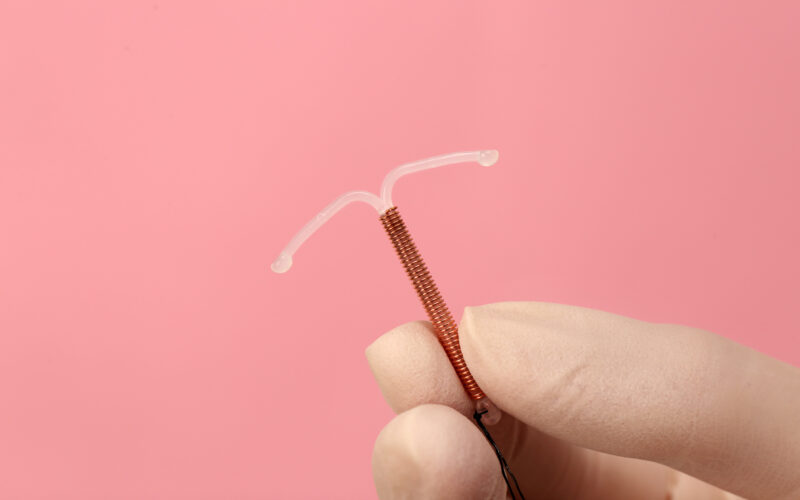When it comes birth control methods, the copper IUD is often seen as a safer alternative to the Pill because of its lack of hormones. However, it’s important to remember that hormone-free does not necessarily mean totally safe for your body. A growing body of evidence suggests women who have used a copper IUD to prevent pregnancy are at greater risk for developing bacterial vaginosis (among other serious issues).
What is a copper IUD?
A copper IUD is a small, T-shaped device that a medical professional inserts into a woman’s uterus as a means of contraception. The device slowly releases copper (Cu) ions into the uterus, essentially killing sperm to prevent fertilization. When properly inserted, the Cu-IUD can prevent pregnancy for up to twelve years.
Many women see the copper IUD as a safer alternative to the birth control pill since it doesn’t release synthetic hormones into the body. But the Cu-IUD is not without its own risks and side effects. In addition to longer, heavier periods, the copper IUD has been associated with pelvic inflammatory disease, backaches, and pain during sex. Additionally, copper IUDs have been linked to heavy metal toxicity symptoms including fatigue, nausea, irritability, brain fog, and more. In rare cases, the copper IUD can actually become embedded in the uterus or migrate to other areas of the body if it’s not properly placed [1]. This can cause a whole slew of problems, and may require surgery to remove.
Furthermore, recent studies have also linked the copper IUD to an increased risk of bacterial vaginosis [2].
What is bacterial vaginosis?
Bacterial vaginosis occurs when the balance of the vagina’s natural “good” bacteria (Lactobacillus) is disrupted by “bad” bacteria. It’s the most common vaginal condition among women aged 15-44 [3]. BV is characterized by pain, discomfort, or itching in the vagina, “fishy”- smelling discharge that can be gray, white, or green, and a burning sensation during urination.
BV can be caused by anything that disrupts the body’s vaginal flora. This can include douching, having sex for the first time, women having sex with women, or having sex with multiple partners. In some cases, something as innocuous as scented soap or bubble bath can interfere with the vaginal flora and lead to BV. Smoking also raises BV risk [2].
Is BV an STD or STI?
Bacterial vaginosis, while a vaginal infection, is not considered a sexually transmitted disease (STD, also known as a sexually transmitted infection or STI). BV is connected to sex because a new sexual partner, or multiple sexual partners, may introduce unfamiliar bacteria to the vaginal area, which can lead to the imbalance that we call BV. Those with BV are more susceptible to getting STDs, including HIV, and face a higher risk of infection after surgical abortion and hysterectomy [2].
Additionally, women who have had BV are more likely to develop pelvic inflammatory disease, which can cause serious damage to reproductive organs and has been linked to infertility. BV is also associated with increased risk of miscarriage, preterm birth, and postpartum fever [2].
BV often comes back
What’s more, if you’ve had BV once, it’s likely to pop up again (recurrence). While the mainline treatments cure up to 85% of women within one month, by 6 months, 50% of those women will have BV again [3]. What causes recurrence? According to a 2021 study, “Factors including persistence of a BV-associated biofilm, failure to recolonise the vagina with lactobacilli, reinfection from an untreated partner, and host genetic and/or immune factors may all play a role in recurrence” [3].
Treatment for bacterial vaginosis
Typically, bacterial vaginosis is treated with antibiotics, either taken orally or topically (i.e., directly applied to the vaginal tissue). During treatment, women with BV should not have sex. A diet rich in probiotics can also help alleviate symptoms and may help prevent recurrence.
The link between BV and the copper IUD
Another 2021 study found that women who use the copper IUD experienced “28% increased risk of bacterial vaginosis, relative to women using either no contraception or an alternative nonhormonal method” [4]. Given the potentially harmful effects of the condition in the long run, the link between the Cu-IUD and BV should not be ignored.
A 2021 study found that women who use the copper IUD experienced “28% increased risk of bacterial vaginosis, relative to women using either no contraception or an alternative nonhormonal method.”
Elevated Risk of Bacterial Vaginosis Among Users of the Copper Intrauterine Device: A Prospective Longitudinal Cohort Study.
It makes sense that inserting a foreign object into the body’s sensitive reproductive system could disrupt the delicate balance of the vaginal flora. But other, less-intuitive factors may contribute to the BV-copper IUD connection as well.
Heavier blood flow and bacteria overgrowth
For example, the copper IUD is known to cause heavier blood flow during menstruation. During normal menstruation, good bacteria is temporarily suppressed, and bad bacteria temporarily increases. The copper IUD may cause increased bleeding, especially in the first year of use, potentially increasing good bacteria suppression.
Study shows E. coli can feed off of copper
Perhaps the most intriguing link between bacterial vaginosis and the copper IUD comes from a 2017 study conducted by Washington University School of Medicine [5]. The study found that bacteria (particularly E.coli) can actually feed off of copper, which may stimulate (bad) bacteria overgrowth, leading to BV.
The bottom line
While the copper IUD is often advertised as a safer approach to contraception since it doesn’t introduce synthetic hormones to the body, it still comes with many troubling side effects. In addition to heavier periods, increased risk of pelvic inflammatory disease, and symptoms similar to heavy metal toxicity, women considering this option also need to be aware of the copper IUD’s link to bacterial vaginosis—a condition that is often recurring, and which can lead to further complications down the road, like pelvic inflammatory disease and infertility.
Every form of contraception has its drawbacks–that’s to be expected when interfering with the body’s natural rhythm. The only way to steer clear of side effects associated with birth control is to stay off it completely—hormones or not! If you’re looking for a risk- and side effect-free way to avoid pregnancy, look to an evidence-based Fertility Awareness Method (FAM). As you track your body’s unique cycle in accordance with your chosen FAM, you’ll not only play a more active role in your family planning, but you’ll also gain insight into your health as a woman–a valuable skill that no device or pill could ever replace.
References:
[1] Aydogdu O, Pulat H. Asymptomatic far-migration of an intrauterine device into the abdominal cavity: A rare entity. Can Urol Assoc J. 2012 Jun;6(3):E134-6. doi: 10.5489/cuaj.11100. PMID: 22709887; PMCID: PMC3377742. [2] Ellington, Kelly DNP, APRN, WHNP-BC, RNC-OB; Saccomano, Scott J. PhD, RN, GNP-BC. Recurrent bacterial vaginosis. The Nurse Practitioner 45(10):p 27-32, October 2020. | DOI: 10.1097/01.NPR.0000696904.36628.0a [3] Vodstrcil, L.A., Muzny, C.A., Plummer, E.L. et al. Bacterial vaginosis: drivers of recurrence and challenges and opportunities in partner treatment. BMC Med 19, 194 (2021). https://doi.org/10.1186/s12916-021-02077-3 [5] Peebles K, Kiweewa FM, Palanee-Phillips T, Chappell C, Singh D, Bunge KE, Naidoo L, Makanani B, Jeenarain N, Reynolds D, Hillier SL, Brown ER, Baeten JM, Balkus JE; MTN-020/ASPIRE study team. Elevated Risk of Bacterial Vaginosis Among Users of the Copper Intrauterine Device: A Prospective Longitudinal Cohort Study. Clin Infect Dis. 2021 Aug 2;73(3):513-520. doi: 10.1093/cid/ciaa703. PMID: 32505132; PMCID: PMC8326546. [5] Eun-Ik Koh, Anne E Robinson, Nilantha Bandara, Buck E Rogers, Jeffrey P Henderson. Copper import in Escherichia coli by the yersiniabactin metallophore system. Nature Chemical Biology, 2017; DOI: 10.1038/nchembio.2441Additional Reading:
“Can I get copper toxicity from the copper IUD?” and other questions: A Natural Womanhood FAQ
Why the Copper IUD is not the natural birth control you’ve been looking for
How my awful experience with the copper IUD led me to truly natural birth control







